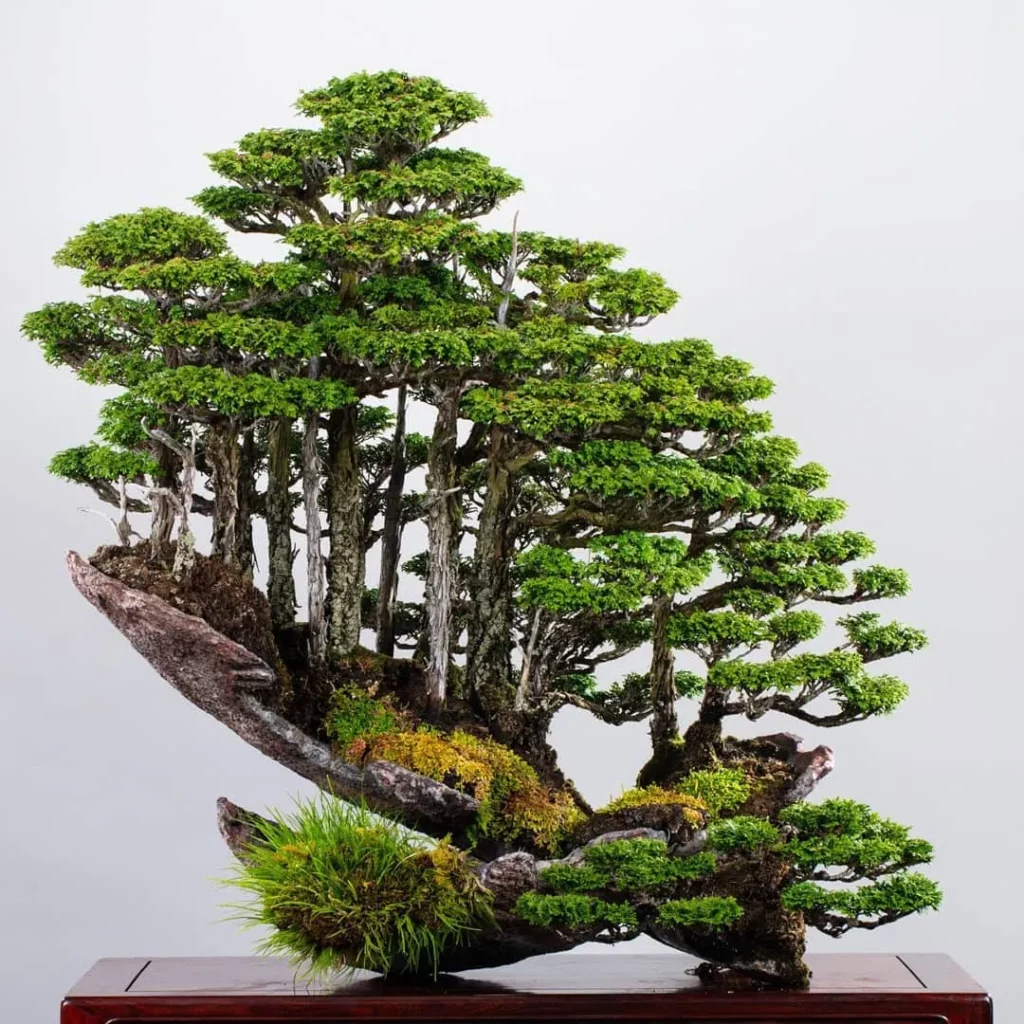Japanese Maple Bonsai (Acer palmatum)

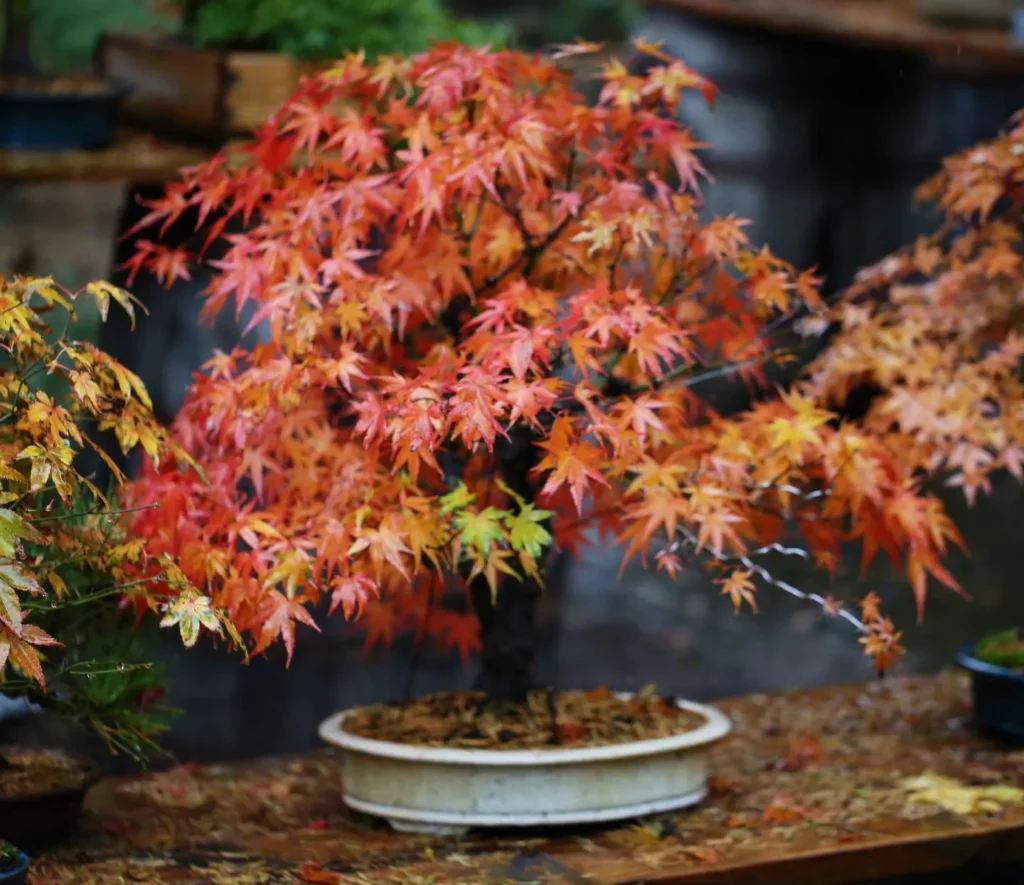
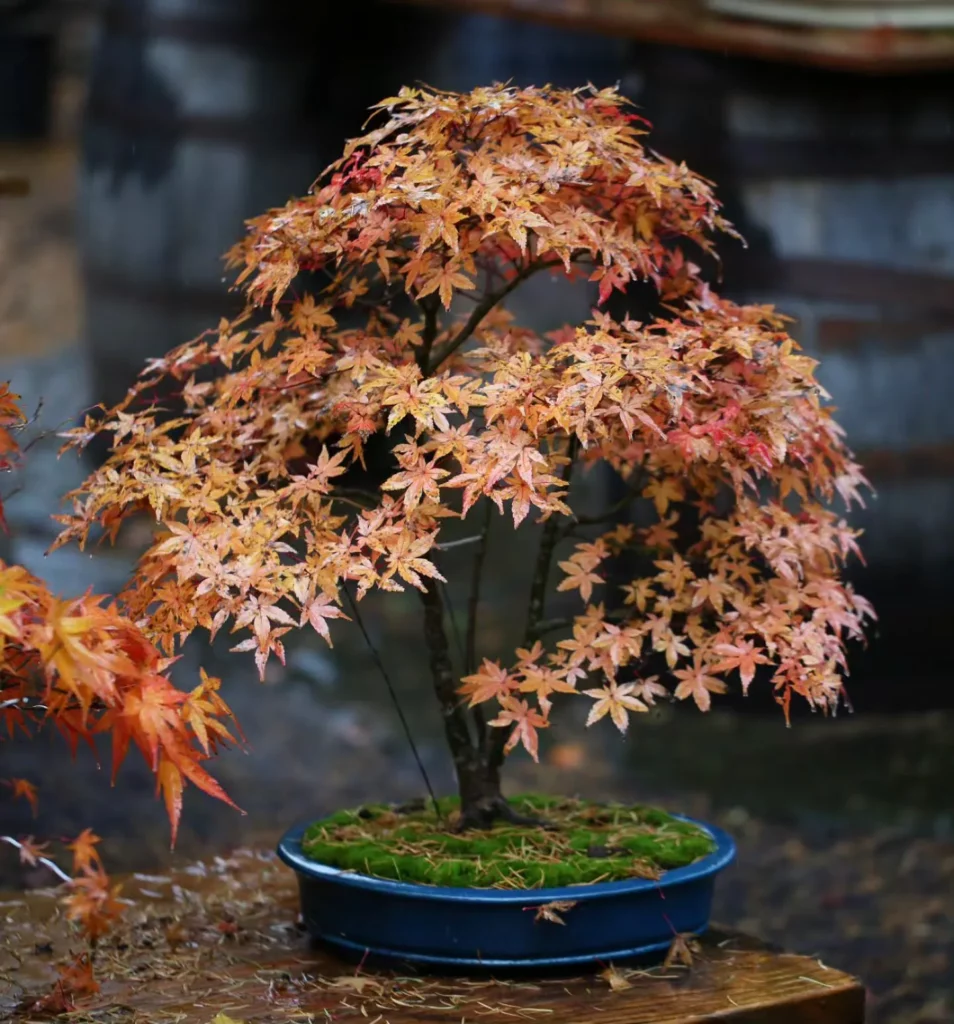
Japanese Maple bonsai trees are perfect for beginners due to their visually appealing foliage that changes color through the seasons, offering a rewarding experience. These trees are relatively easy to care for, making them a great choice for those new to bonsai cultivation. The Japanese Maple’s adaptability to various bonsai styles adds to its appeal for beginners.
- Ideal for: Outdoor cultivation
- Seasonal Changes: Leaves change color from green in spring and summer to reds and yellows in fall
- Pruning Tips: Best pruned in late autumn or early winter to shape and maintain size
Chinese Elm Bonsai (Ulmus parvifolia)
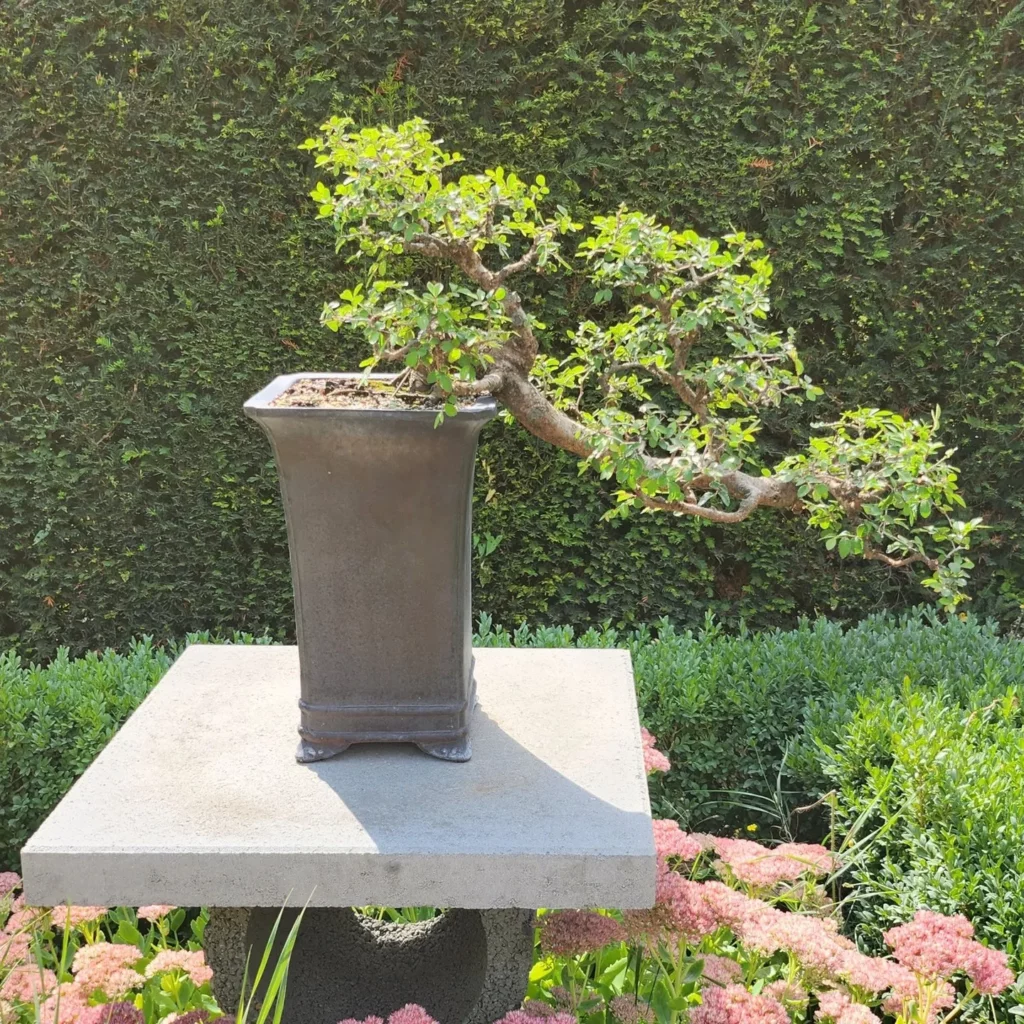
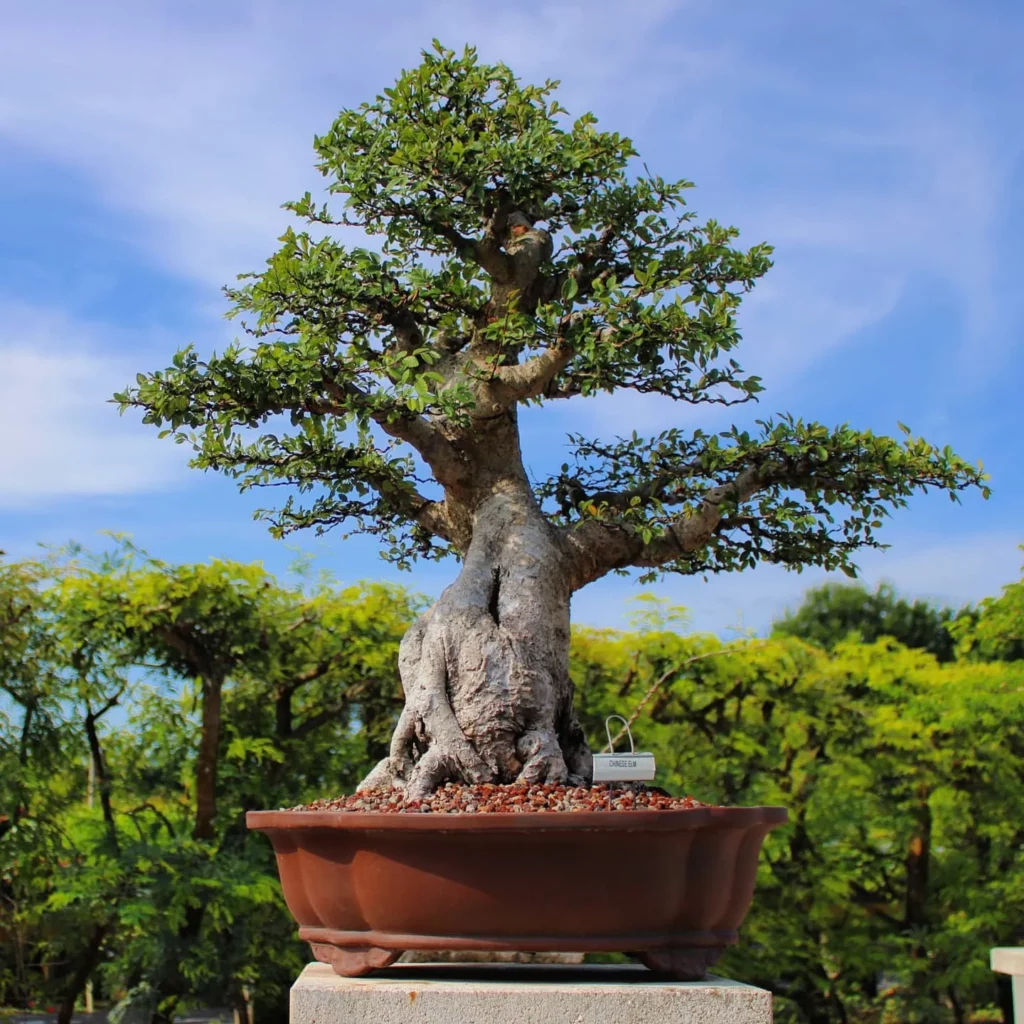
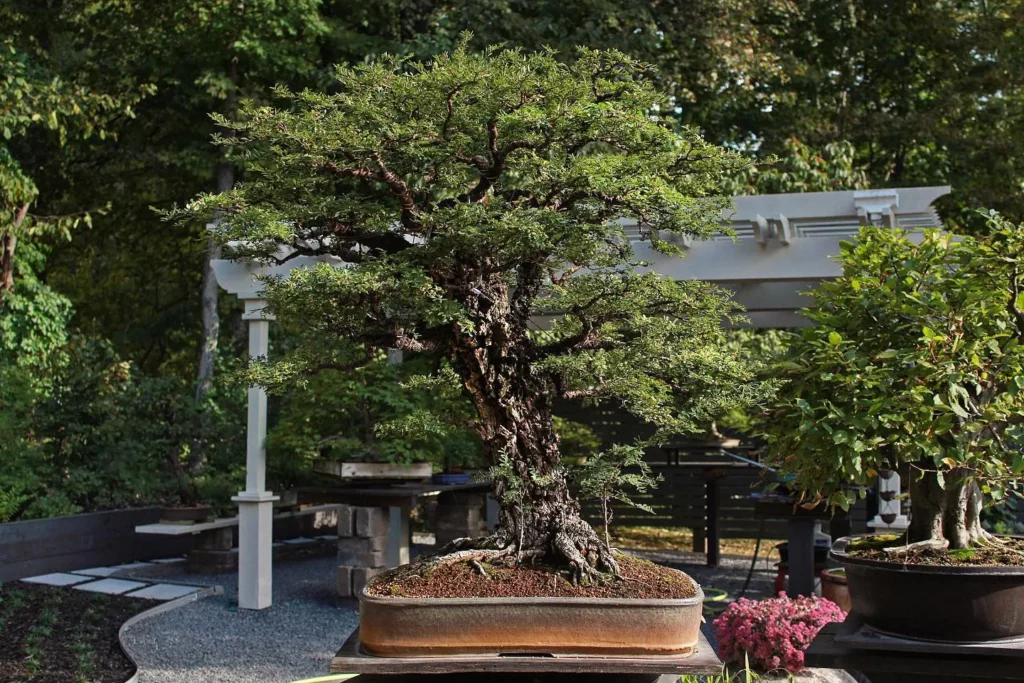
Chinese Elm bonsai is a top recommendation for beginners due to its robust nature and tolerance of a wide range of conditions. It’s a forgiving species, ideal for those learning the ropes of bonsai care. The tree’s small leaves and fine branching make it visually appealing for a bonsai.
- Growth Environment: Thrives both indoors and outdoors
- Leaf Characteristics: Small, glossy green leaves that can turn yellow in the fall
- Watering: Regular watering, ensuring soil doesn’t completely dry out
Ficus Bonsai (Ficus spp.)
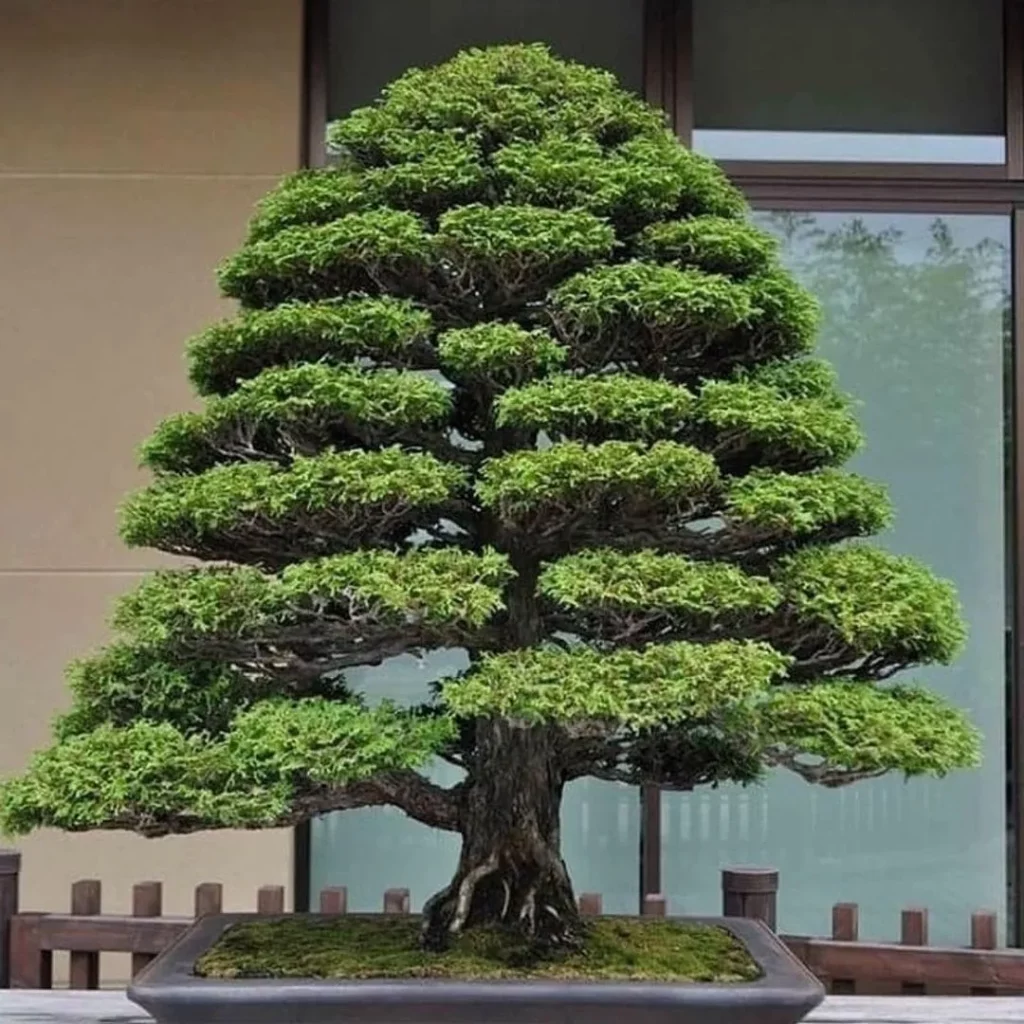
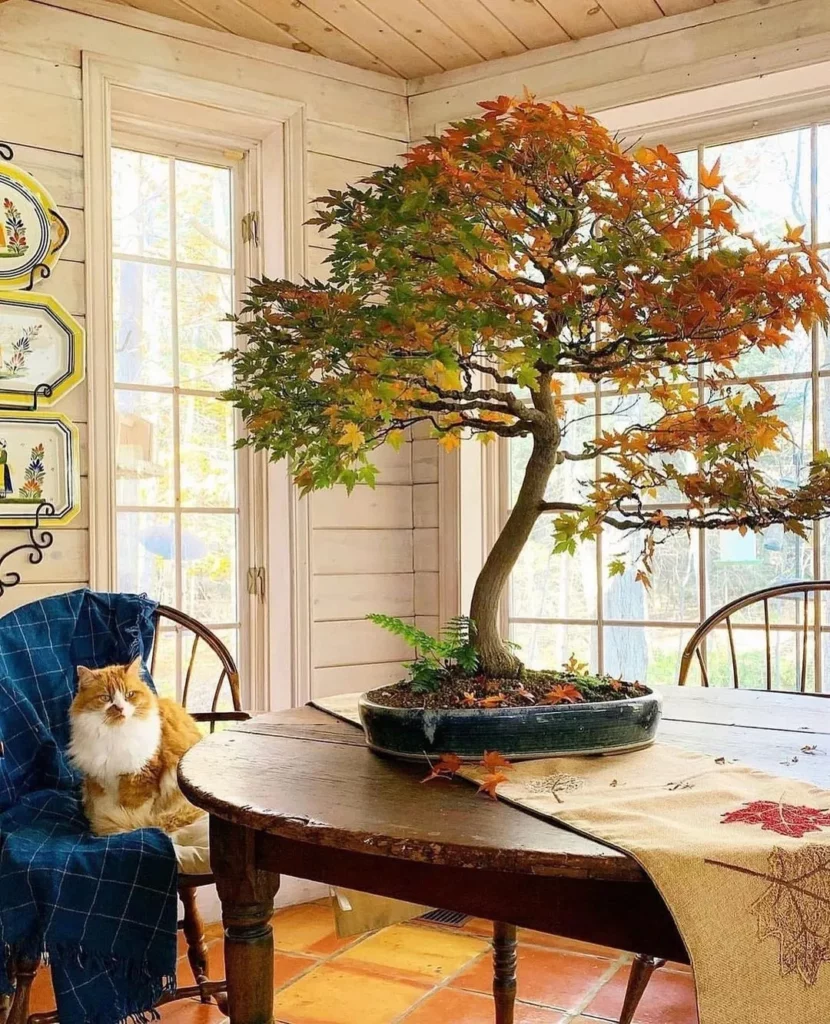

Ficus bonsai trees are excellent for beginners because they are very forgiving and can survive occasional mistakes in watering or lighting. They thrive well indoors, making them suitable for people without outdoor space. The Ficus species also features an attractive root system that adds to its visual interest.
- Light Requirements: Bright, indirect light
- Varieties: Many varieties available, including Ficus retusa and Ficus benjamina
- Air Purifying: Known to improve indoor air quality
Juniper Bonsai (Juniperus spp.)
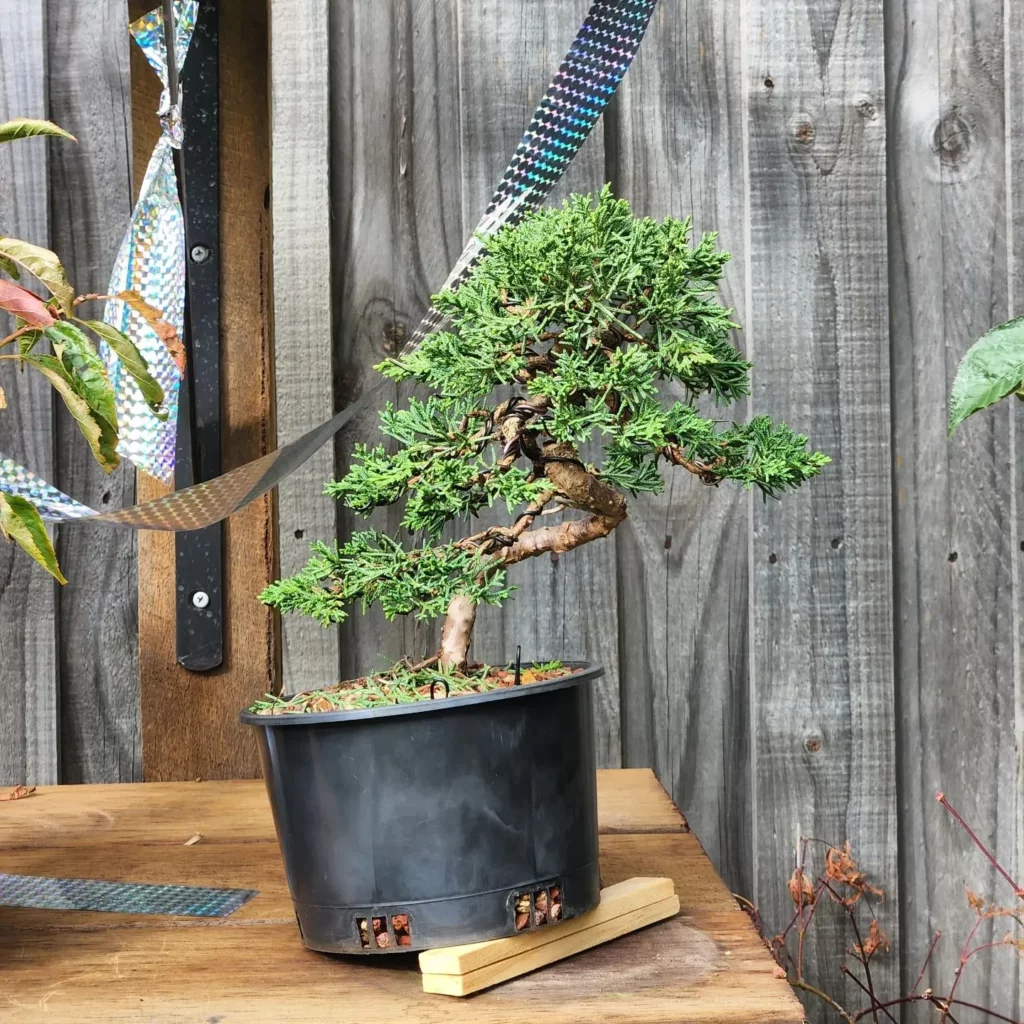
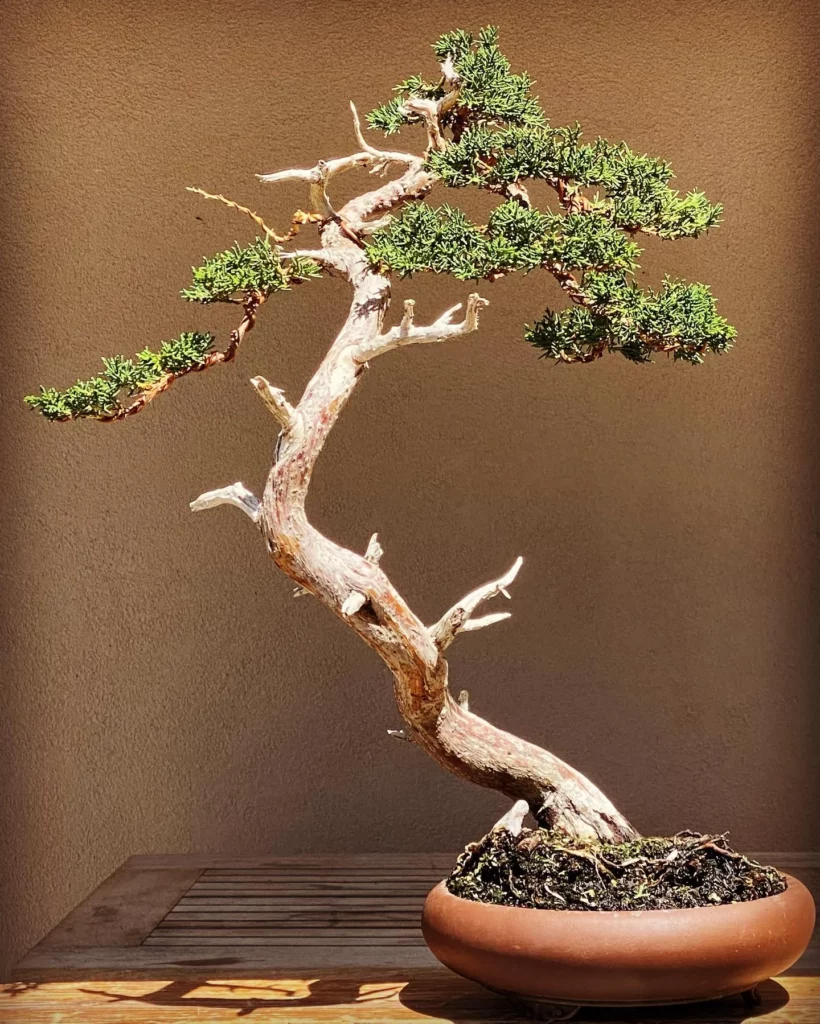
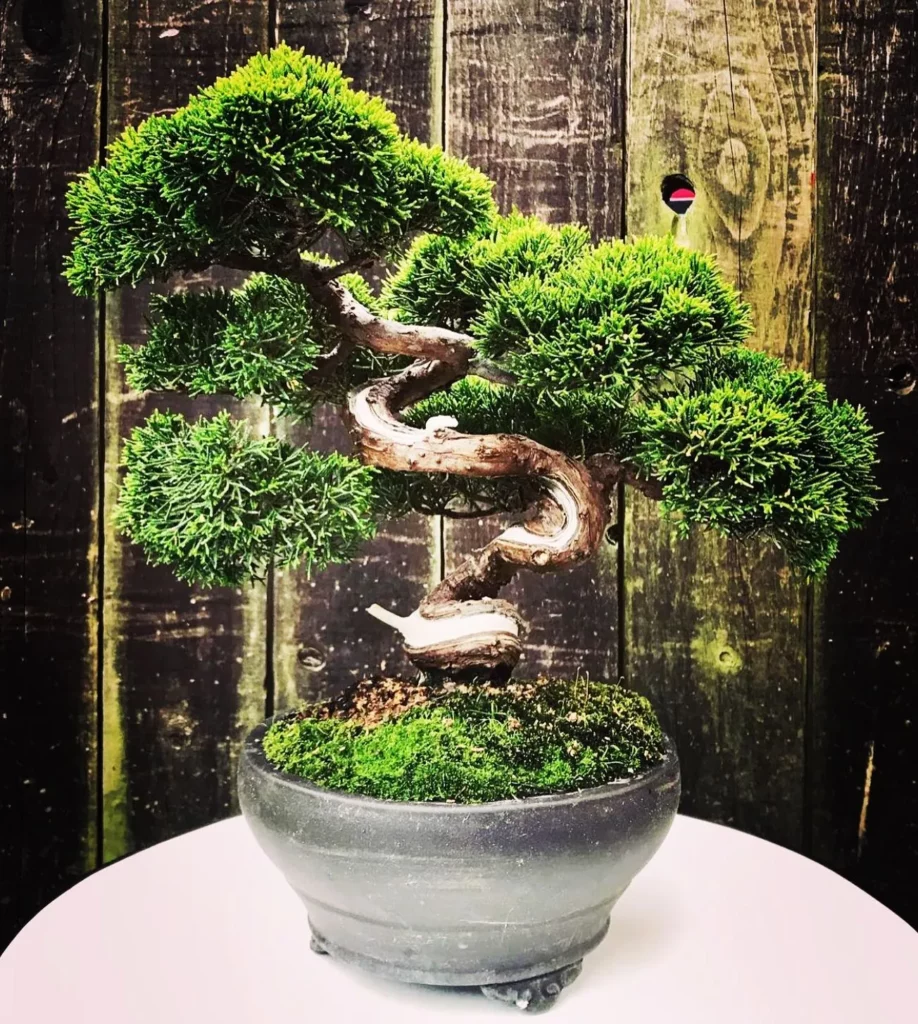
Juniper bonsai trees are popular among beginners for their hardiness and classic bonsai appearance. They are perfect for those starting out because they can tolerate a range of conditions and are easy to shape. Junipers are best kept outdoors and require relatively low maintenance.
- Outdoor Placement: Requires full or partial sunlight
- Winter Care: Can tolerate cold but should be protected from extreme conditions
- Pruning: Best pruned in spring and summer for shaping
Pine Bonsai (Pinus spp.)

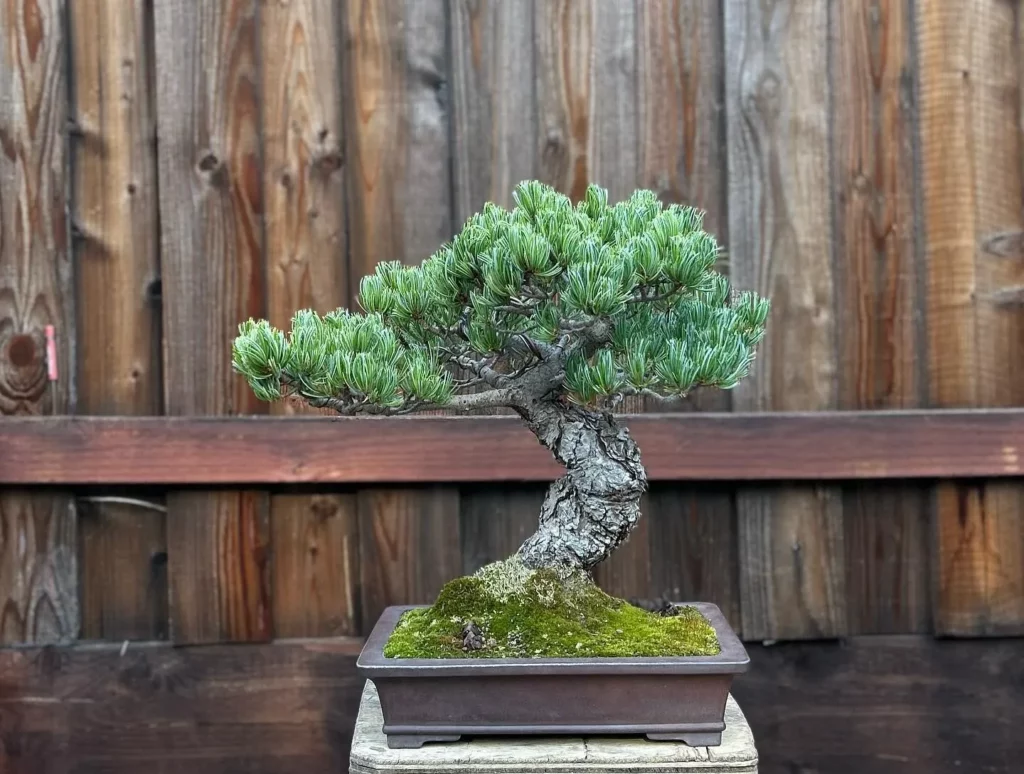
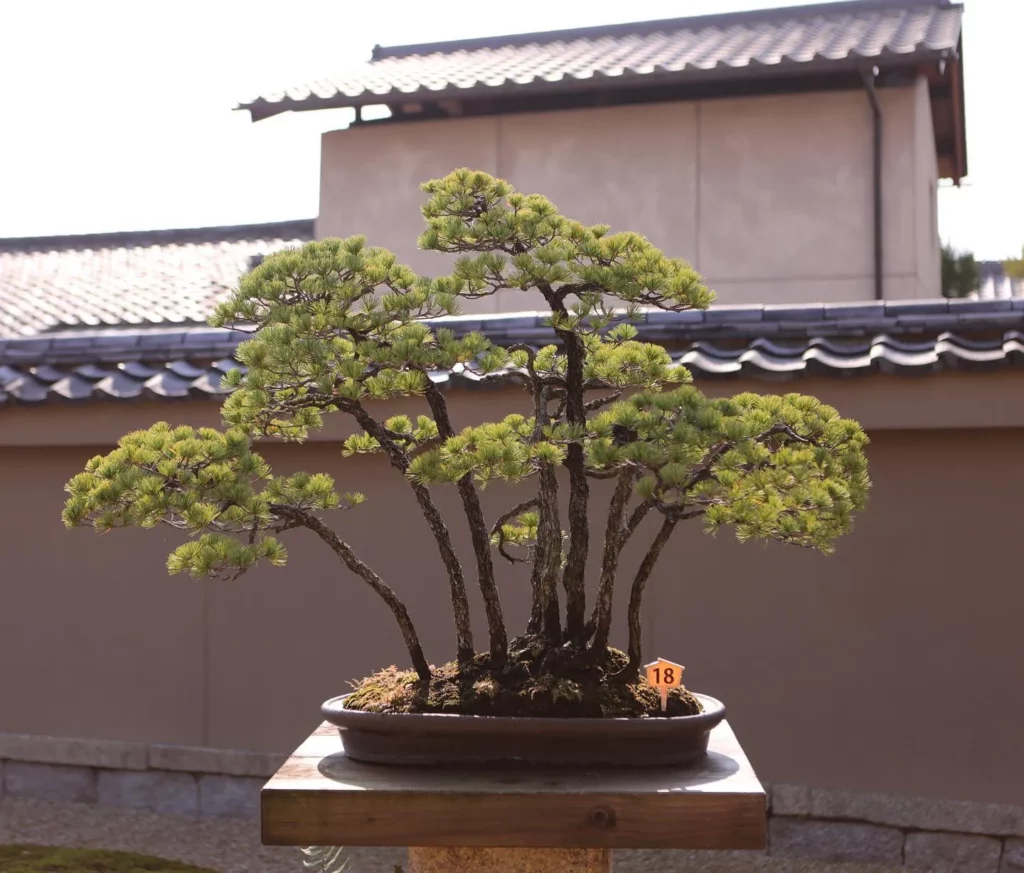
Pine bonsai trees are a classic choice for beginners, known for their needle-like leaves and woody stems. They are resilient and can tolerate a range of outdoor conditions, making them suitable for beginner enthusiasts. Pines grow slowly, which is beneficial for beginners as it allows more time to learn pruning techniques.
- Sunlight Needs: Full sun is ideal
- Watering: Allow the soil to dry slightly between watering
- Repotting: Generally requires repotting every two to three years
Boxwood Bonsai (Buxus spp.)
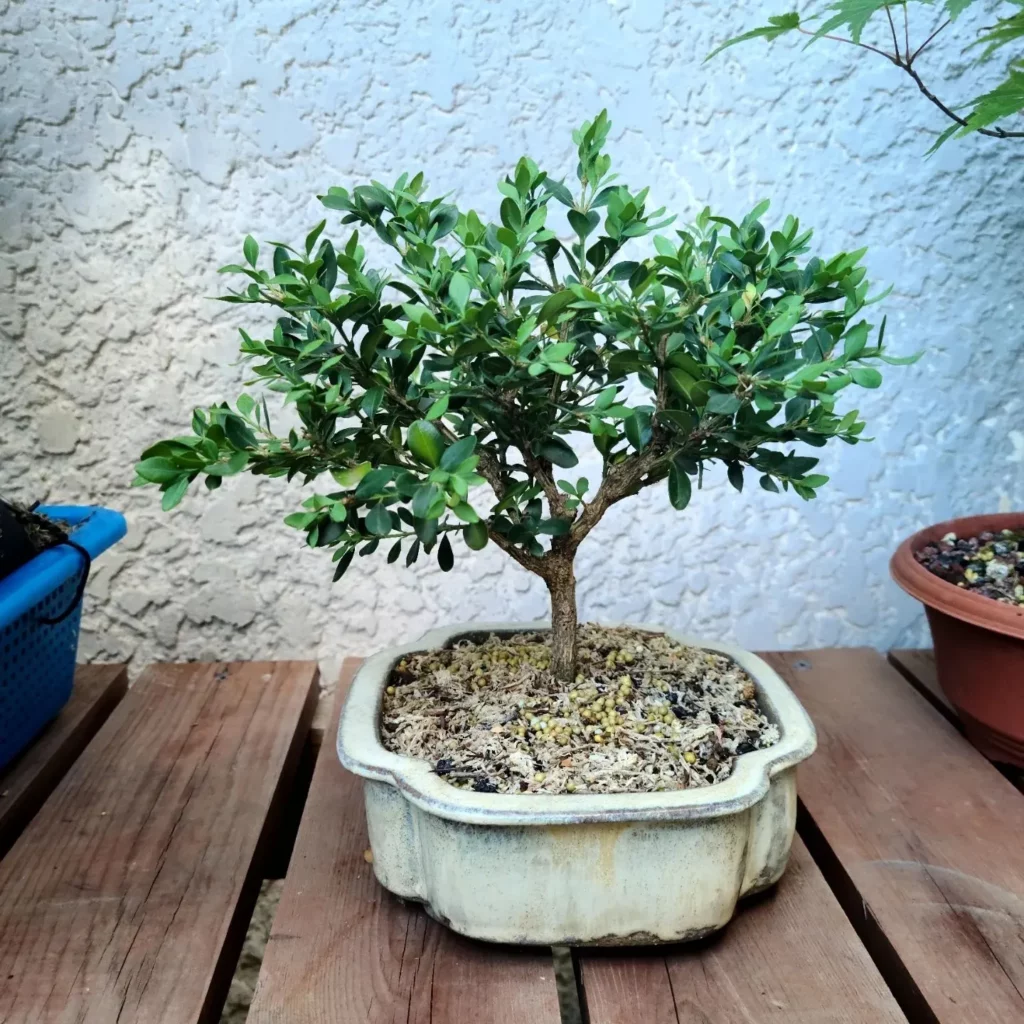
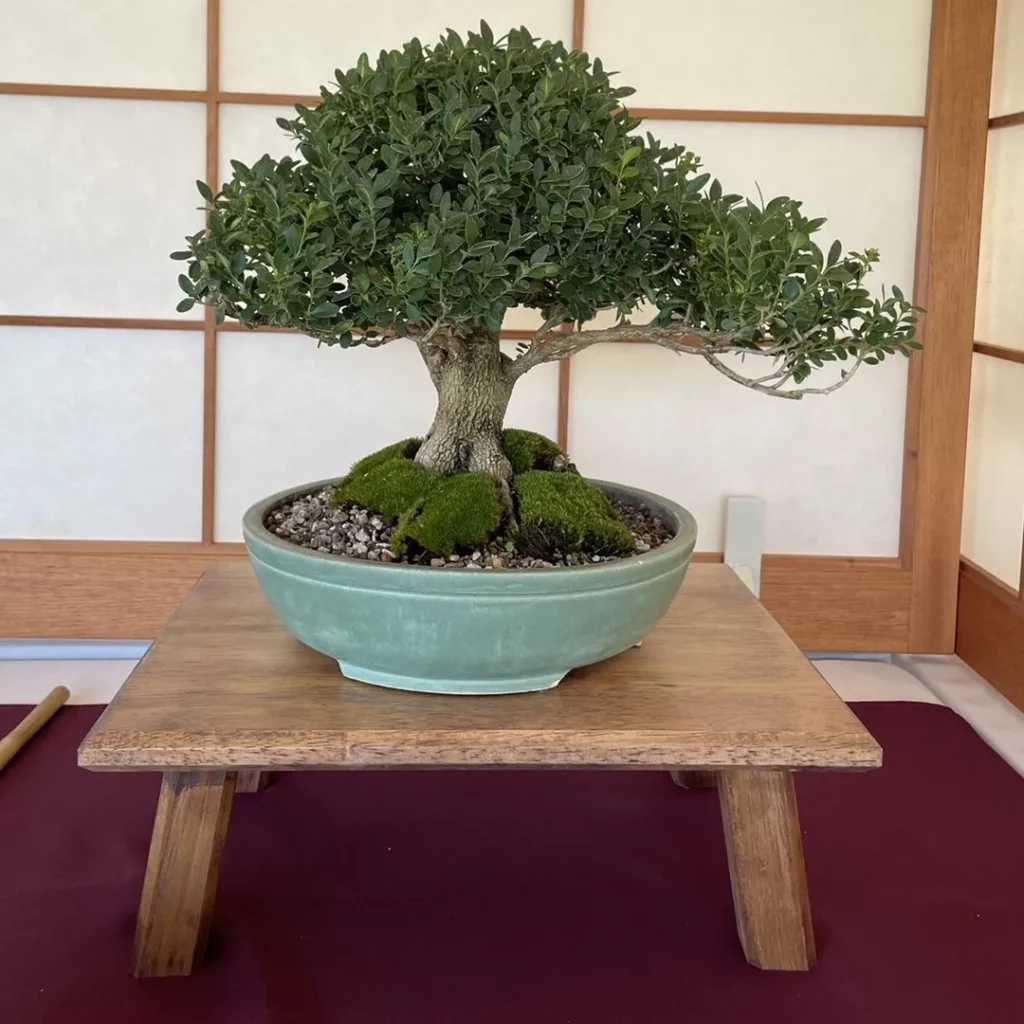
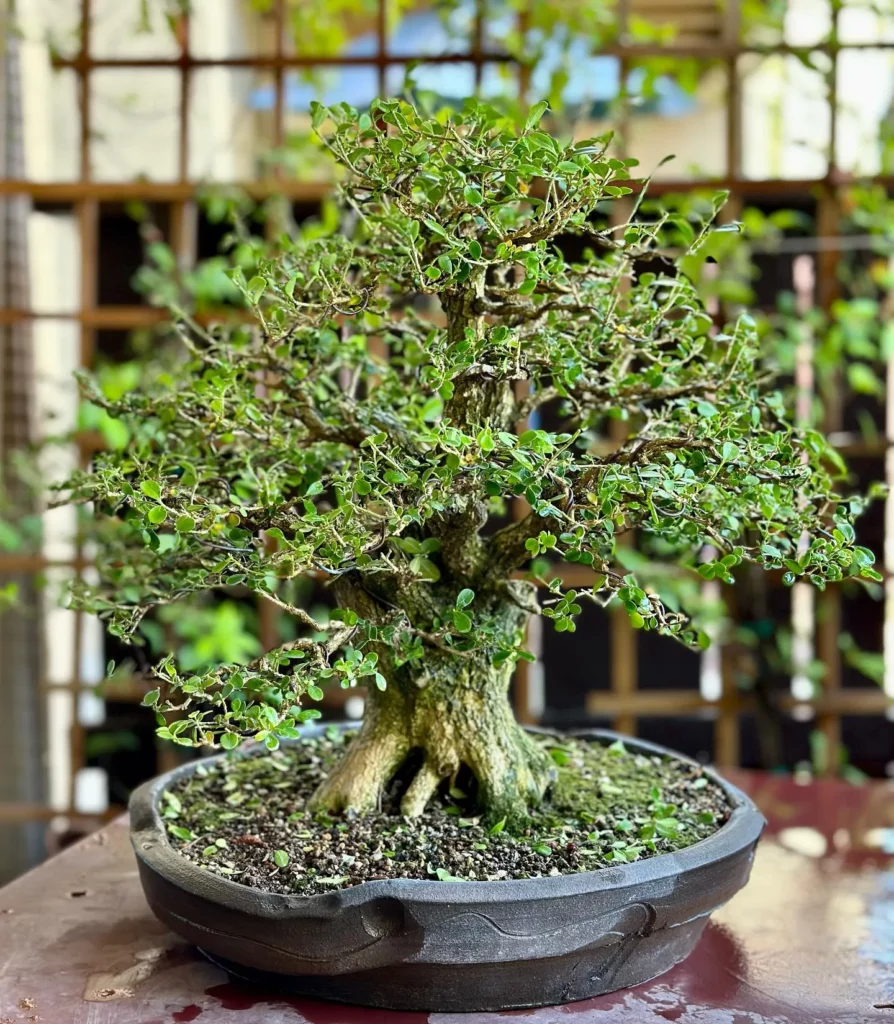
Boxwood bonsai are great for beginners due to their durability and ease of shaping. These trees have small leaves and dense foliage, making them ideal for various bonsai styles. Boxwoods can tolerate a range of light conditions, which is beneficial for those new to bonsai.
- Light Requirements: Adaptable to both full sun and partial shade
- Leaf Pruning: Can be done throughout the growing season
- Winter Care: Needs protection from harsh winter conditions
Trident Maple Bonsai (Acer buergerianum)
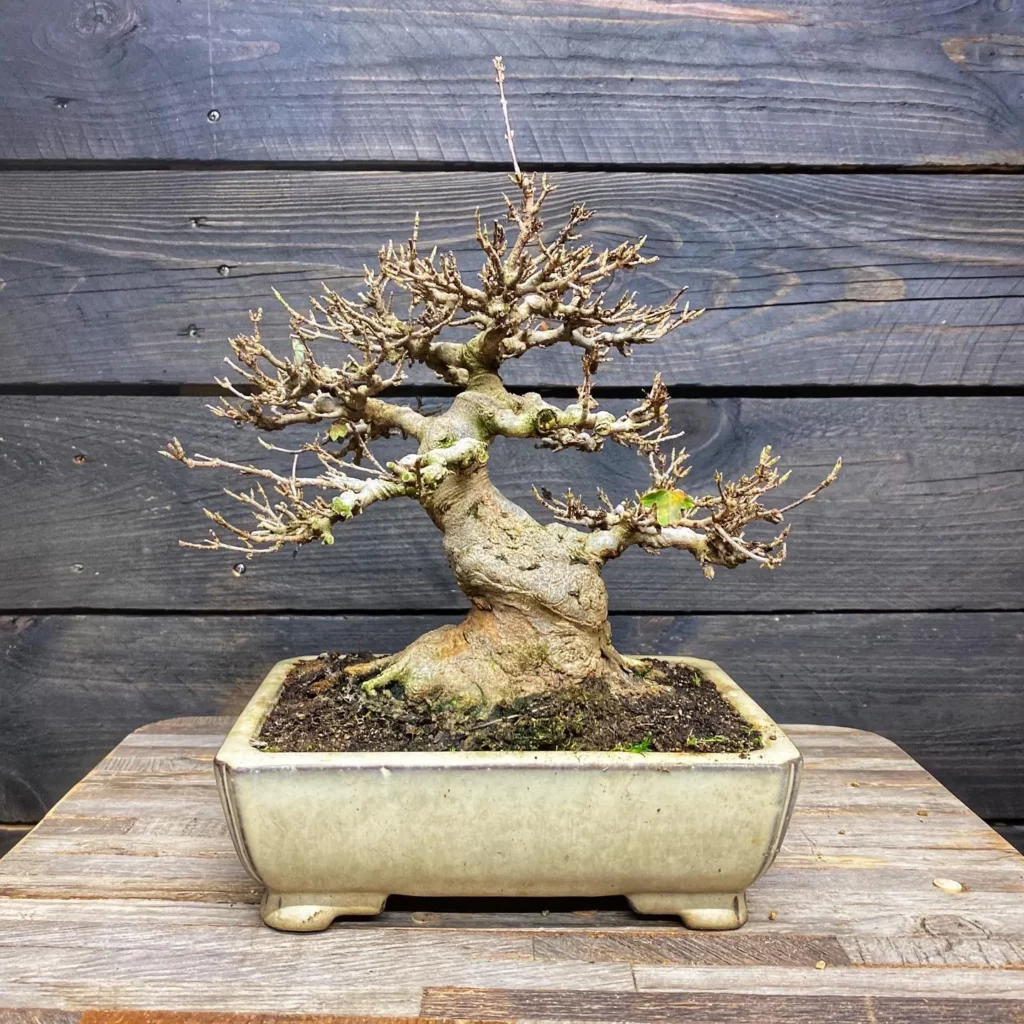


Trident Maple bonsai is an excellent choice for beginners because of its vigorous growth and adaptability to various climates. Its small leaves and attractive bark make it visually appealing for a bonsai. For beginners, Trident Maples are forgiving and respond well to training and pruning.
- Growth Rate: Fast-growing, ideal for those who want to see quick results
- Leaf Color: Green in spring and summer, turning to vibrant reds and oranges in fall
- Watering: Prefers consistent moisture, but soil should not be overly wet
Serissa Bonsai (Serissa foetida)
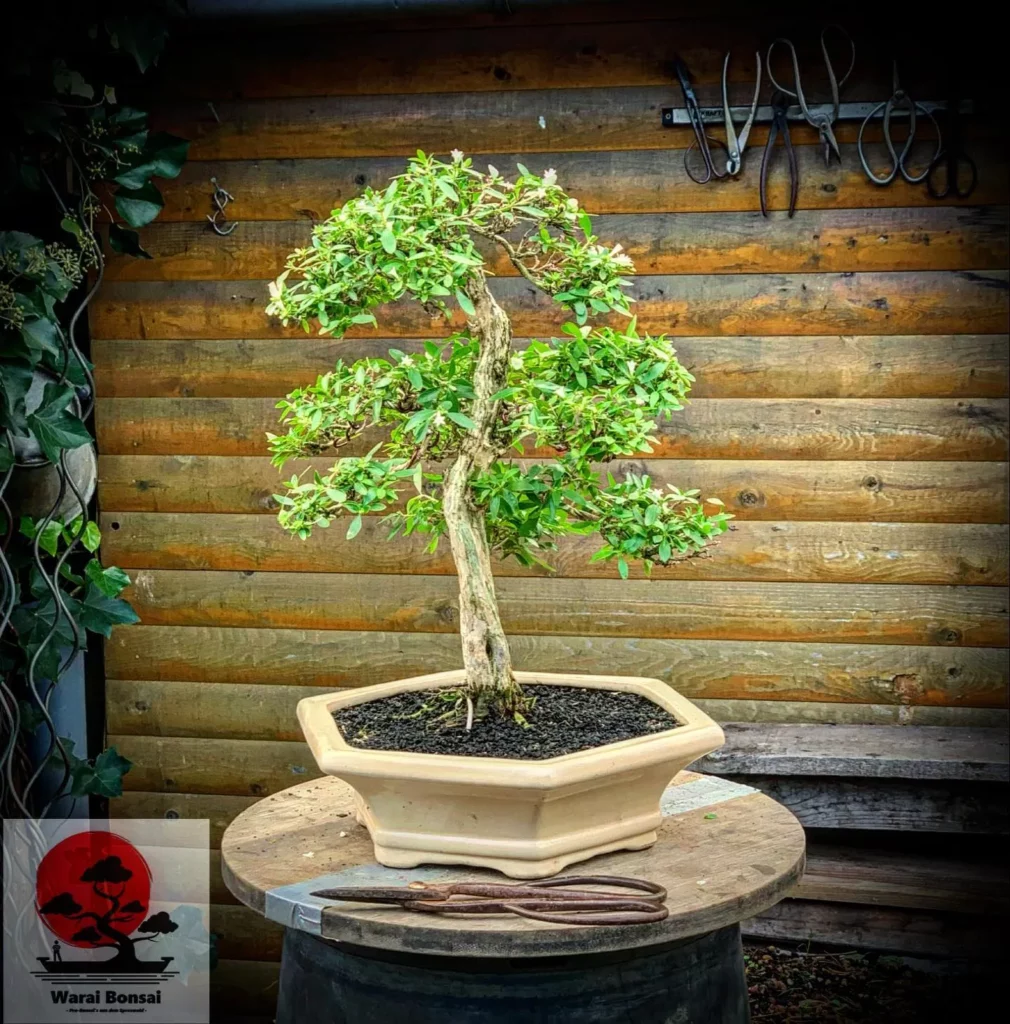

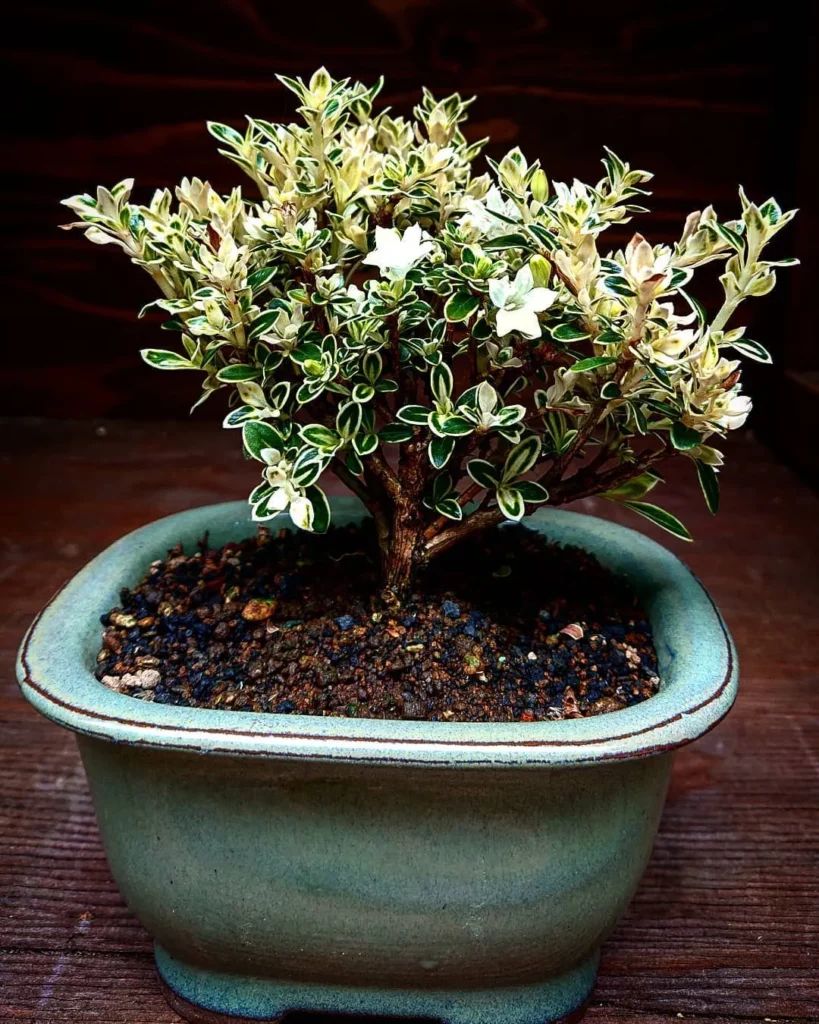
Serissa bonsai are suitable for beginners who want a flowering bonsai, as it blooms frequently. These trees require a bit more care, offering a good learning experience for beginners. Serissa’s small leaves and fine branches make for an attractive miniature tree.
- Flowering: Produces small white flowers throughout the year
- Light Requirements: Prefers bright, indirect sunlight
- Watering: Needs consistent watering, but avoid waterlogging the soil
Olive Bonsai (Olea europaea)

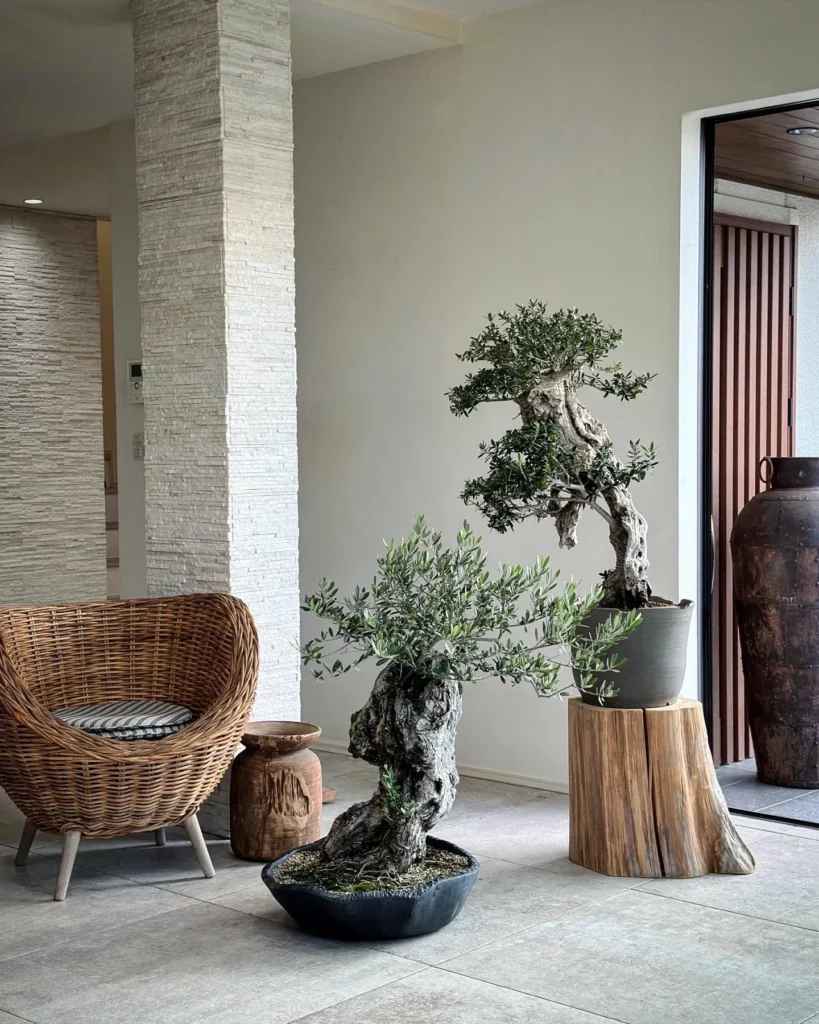
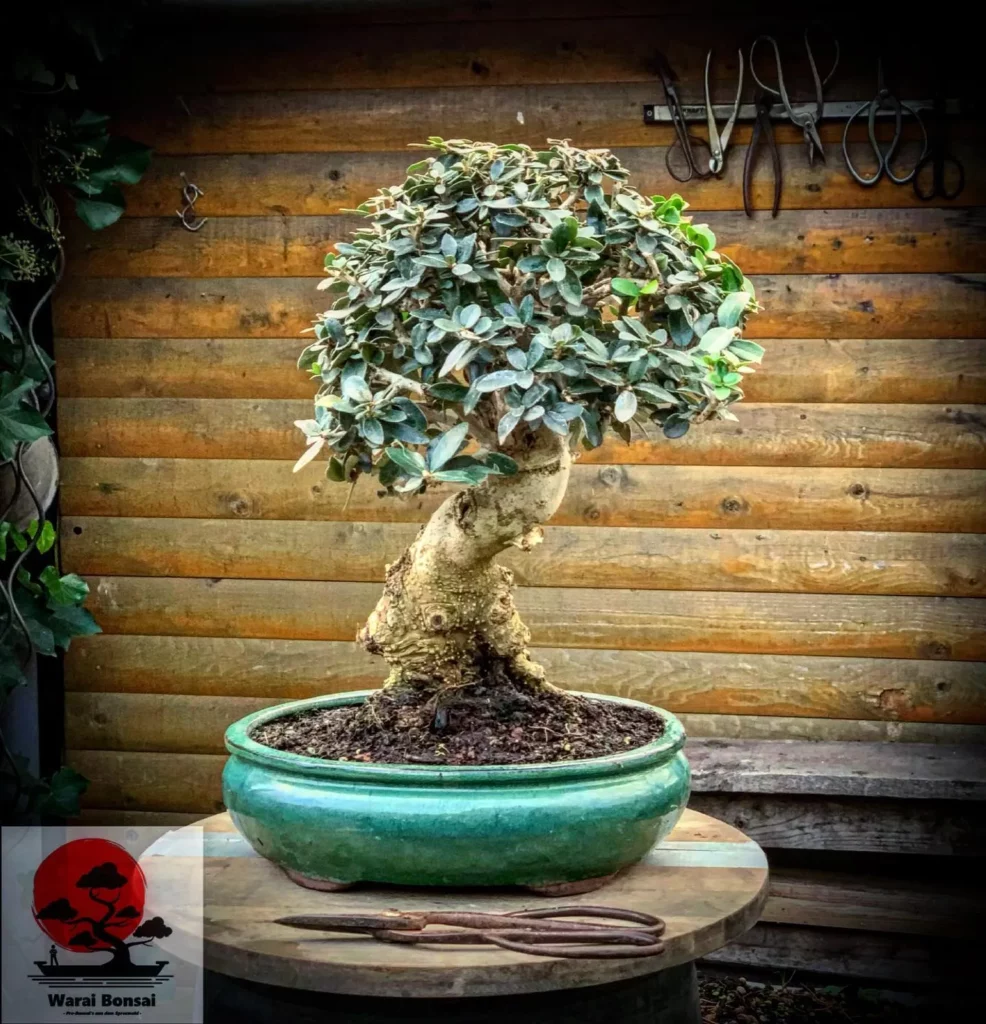
Olive bonsai trees are great for beginners due to their resilience and unique appearance. They are drought-tolerant, making them forgiving for those new to bonsai care. Olives can produce fruit, adding an interesting element to the bonsai experience.
- Indoor/Outdoor: Can be grown indoors or outdoors in warm climates
- Fruiting: Capable of producing olives under the right conditions
- Pruning: Responds well to pruning and shaping
Chinese Sweet Plum Bonsai (Sageretia theezans)
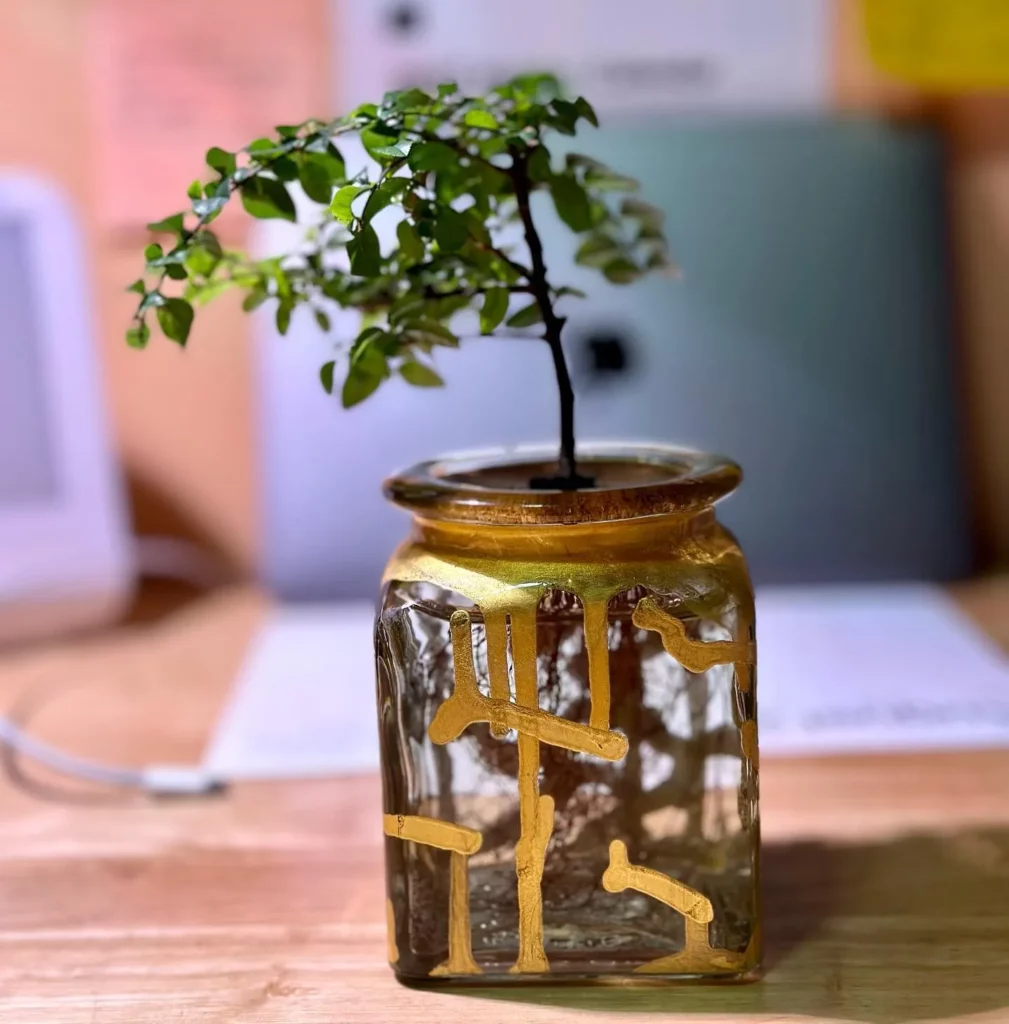
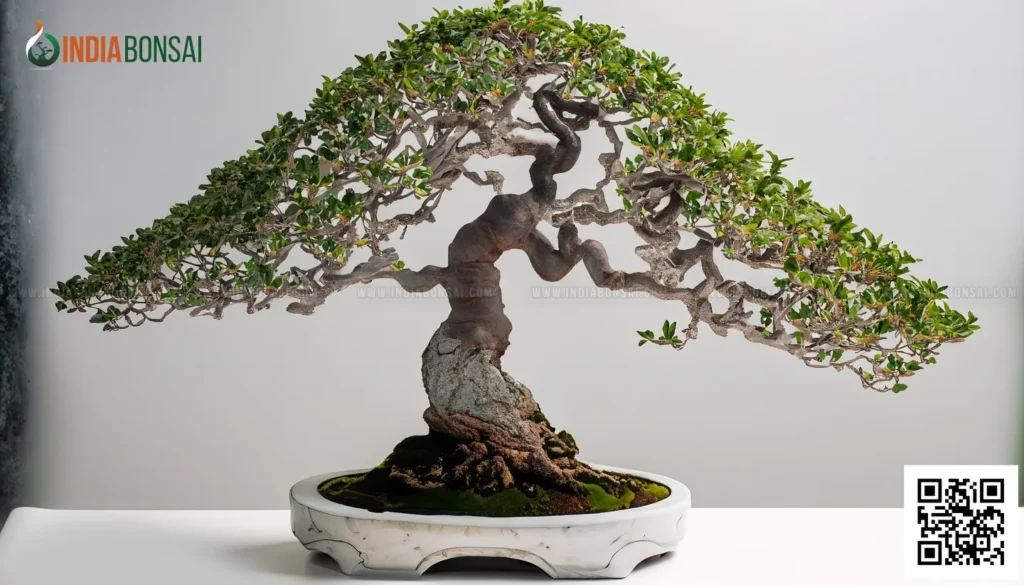

Chinese Sweet Plum bonsai is a good choice for beginners because of its small leaves, attractive bark, and ability to produce small fruits. It’s a forgiving species that tolerates indoor environments well. This species is particularly known for its beautiful trunk and twig structure.
- Indoor Growth: Thrives indoors with adequate light
- Fruiting: Can produce small, plum-like fruits
- Leaf Pruning: Responds well to regular pruning, encouraging dense foliage growth
After this check out our other articles on:
What Should I Consider When Choosing A Bonsai Tree?
When selecting a bonsai tree, it’s important to look for a healthy plant with a strong trunk and well-developed branches. You should also choose a tree that matches your level of experience, as some trees can be more challenging to care for than others.
Is It Better To Start With A Pre-Bonsai Or A Fully Developed Bonsai Tree?
For beginners, it’s generally recommended to start with a pre-bonsai tree. These trees are less expensive than fully developed bonsai trees and allow you to learn bonsai techniques as the tree grows and develops.
What Kind Of Care Does A Bonsai Tree Need?
To keep a bonsai tree healthy and in good shape, you’ll need to regularly water it, fertilize it, prune it, and wire it. The specific care requirements will depend on the type of tree you have, so be sure to do some research and learn about your tree’s unique needs.
Do I Need Special Tools To Take Care Of My Bonsai Tree?
Yes, you’ll need some specialized tools for taking care of your bonsai tree, including pruning shears, wire cutters, and concave cutters. These tools are designed specifically for working with bonsai trees and can provide greater precision and control than regular gardening tools.
Can I Keep My Bonsai Tree Inside My Home?
Many bonsai trees can be grown indoors, but it’s important to select a tree that is well-suited for indoor growing conditions. Indoor bonsai trees will need bright, indirect light and protection from extreme temperatures and drafts.
How Long Does It Take To Create A Mature Bonsai Tree?
Creating a mature bonsai tree can take several years or even decades, depending on the type of tree and the techniques used. Bonsai requires patience and dedication, but the results can be incredibly rewarding.

